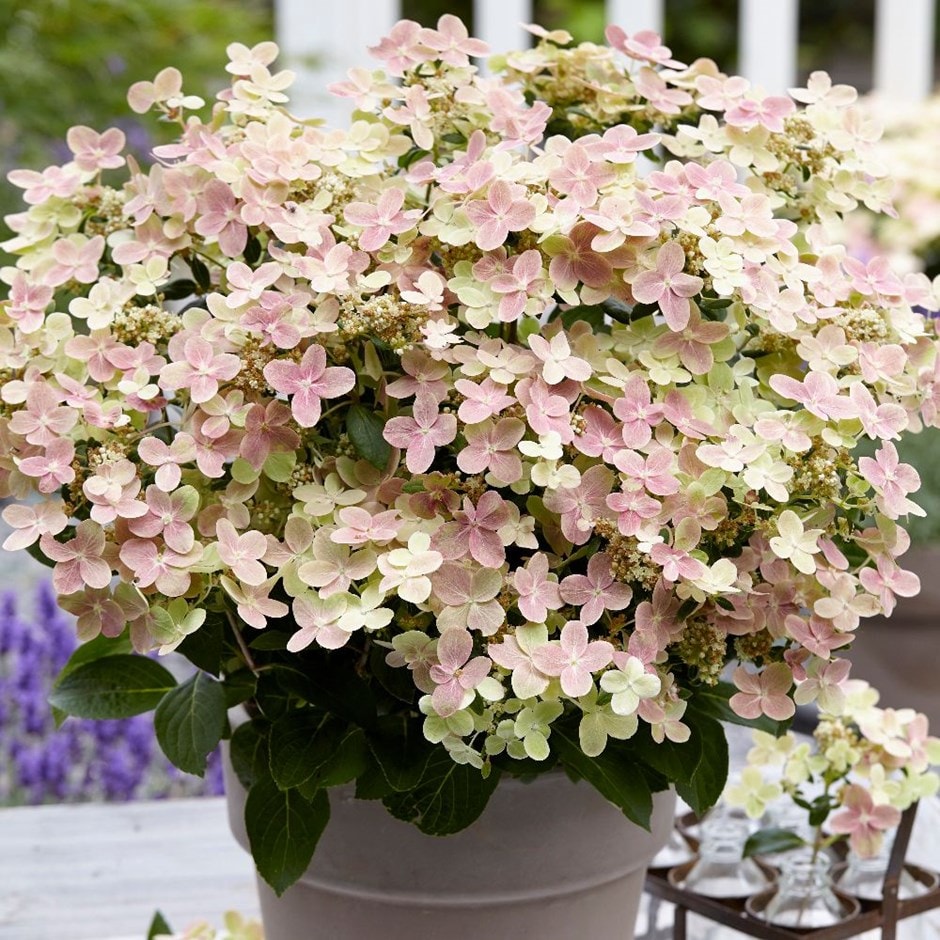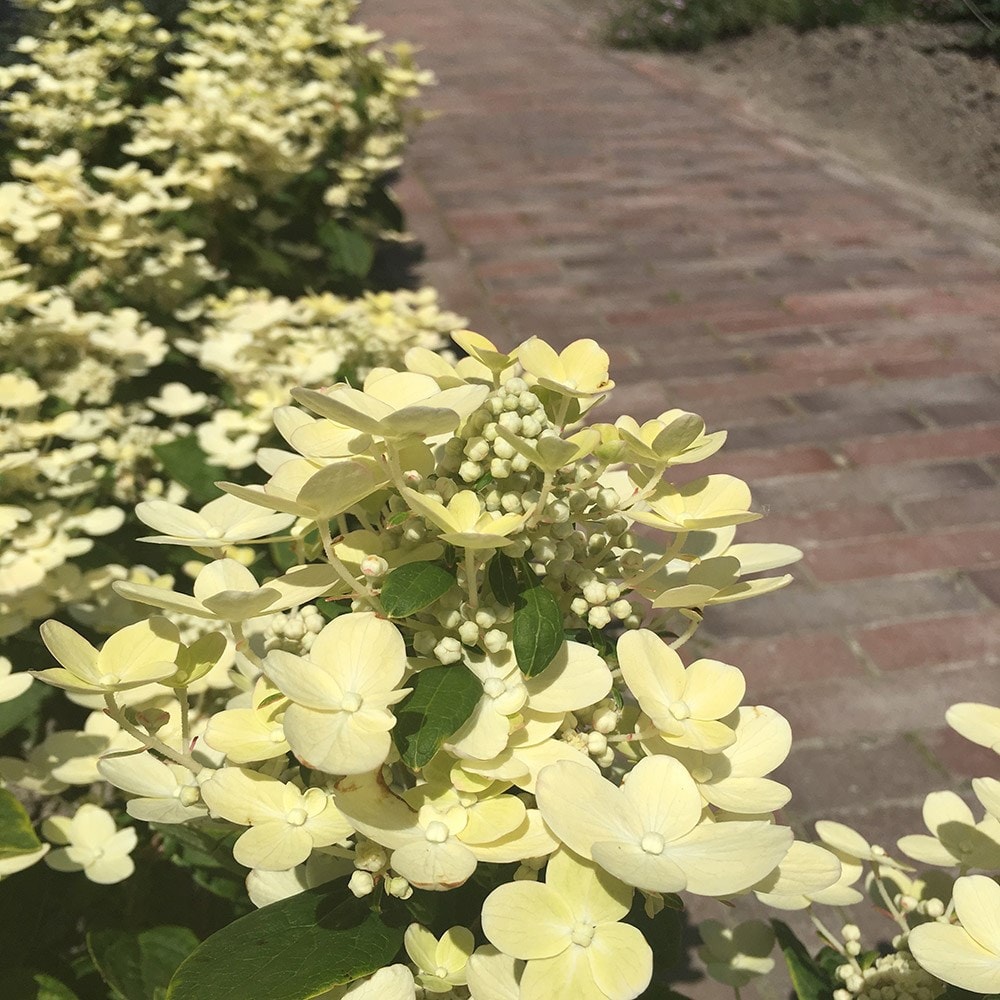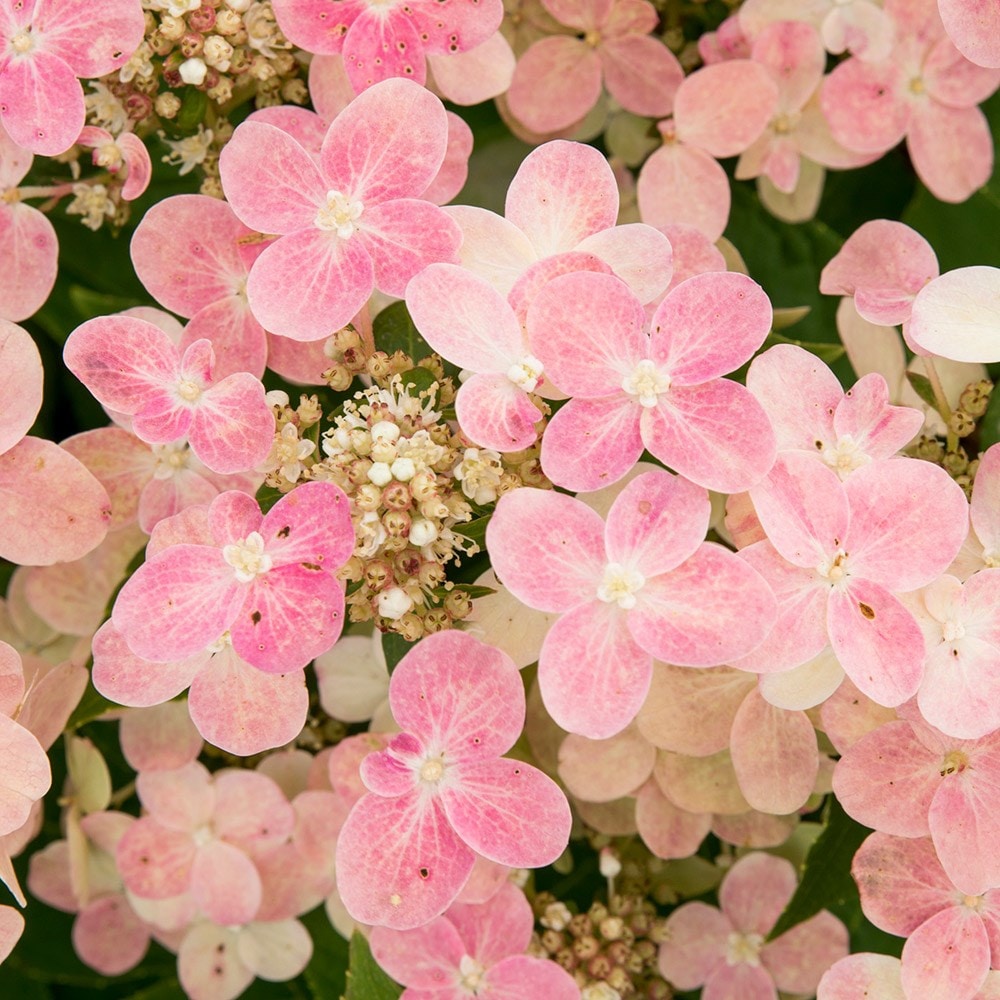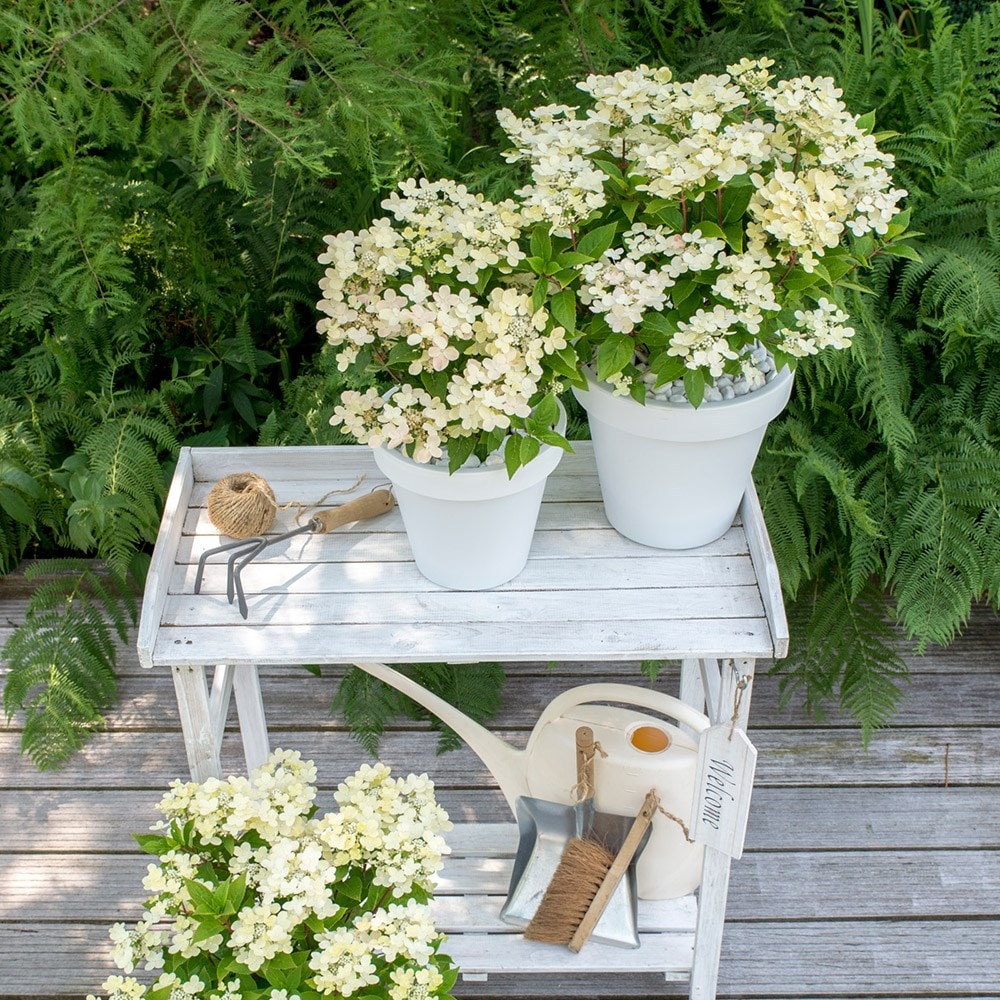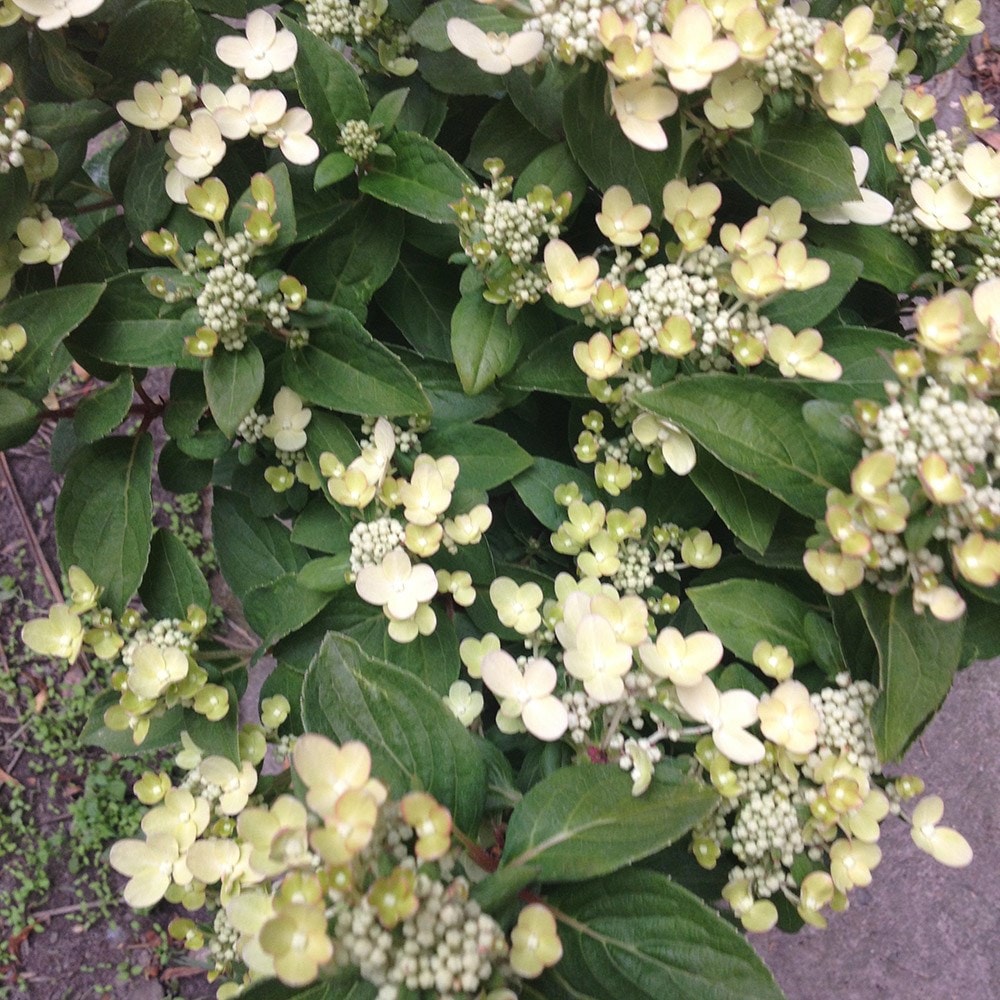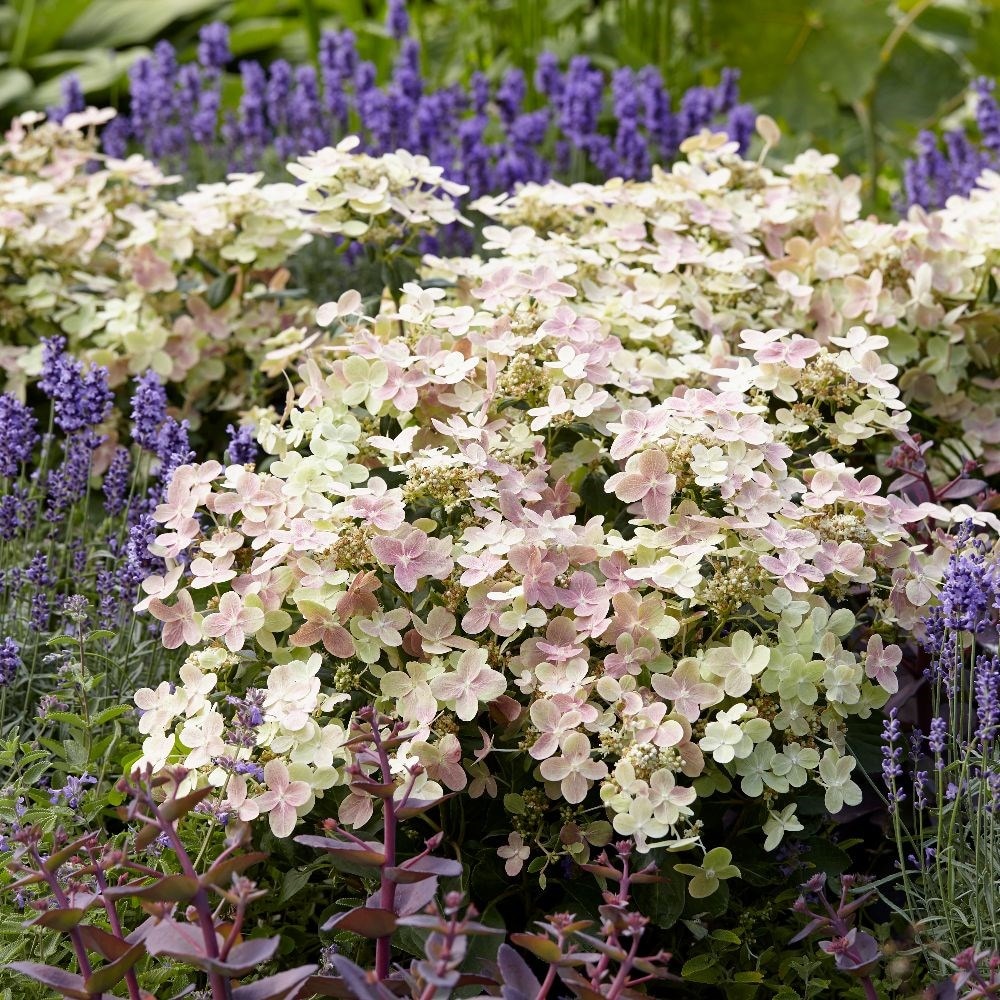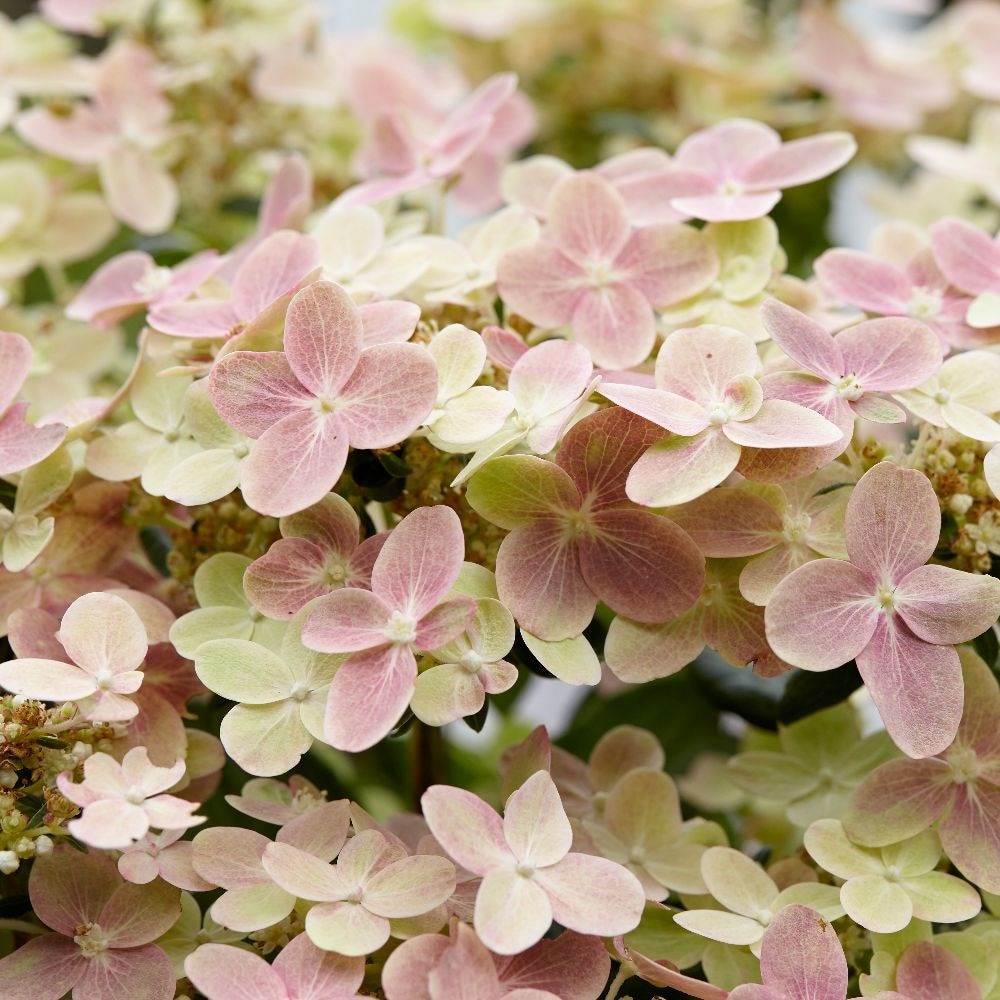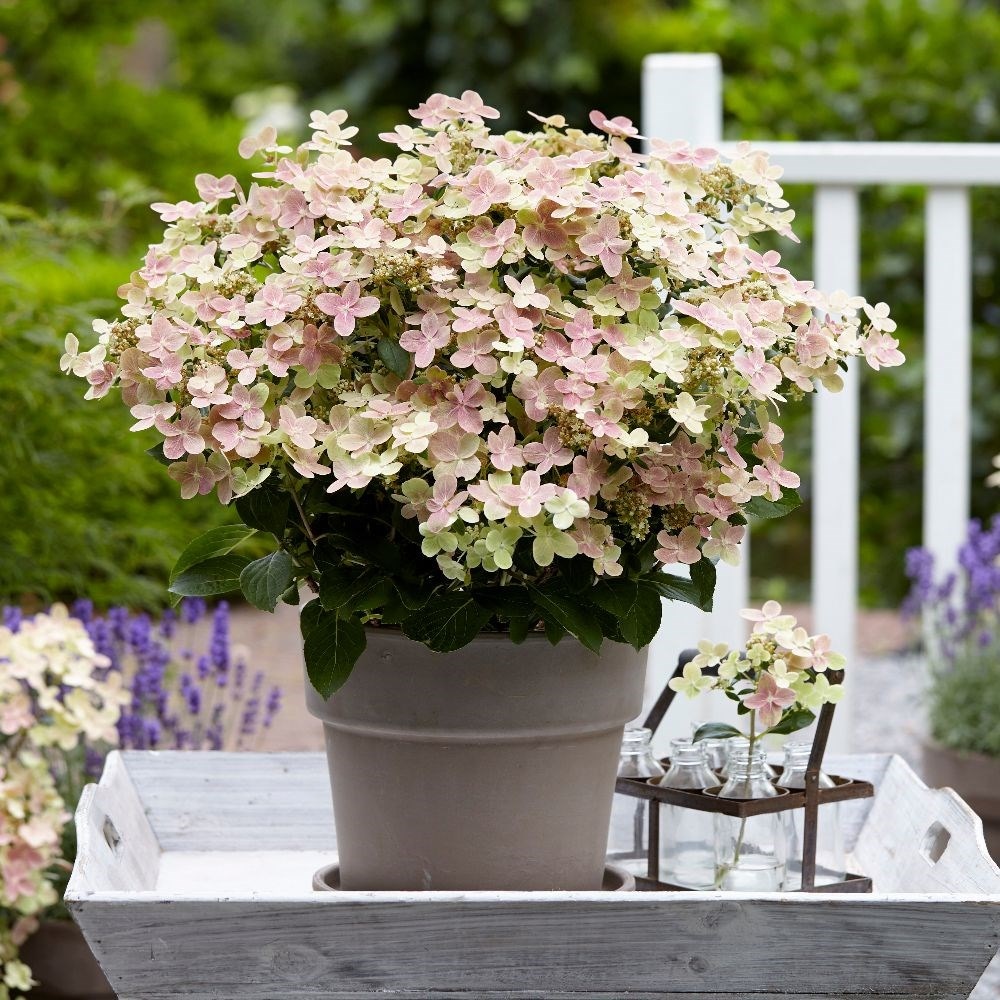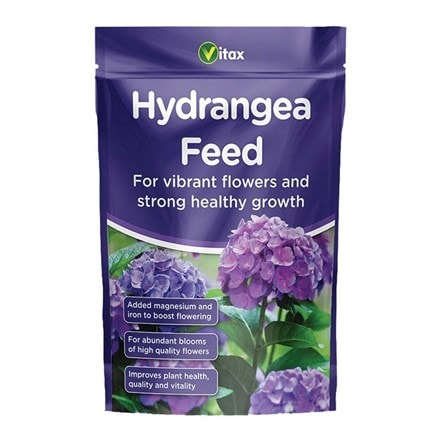Eventual height & spread
Hydrangea Polestar ('Breg14') (PBR)
hydrangea ( syn. Hydrangea Switch Ophelia)
- 2 litre pot
- £24.75
- In stock (shipped within 2-3 working days)
Delivery options
- Standard £5.99
- Position: full sun or partial shade
- Soil: moist, well-drained, moderately fertile, humus-rich soil
- Rate of growth: fast
- Flowering period: June to October
- Hardiness: fully hardy
Hydrangea paniculata Polestar is unique because of its really compact habit (reaching just 50cm or 20in or so at maturity), and its ability to start flowering much earlier in the year than any of the other paniculata types. Being so compact, it's a natural for a pot, but it can also be used toward the front of mixed or shrub borders. Also, the flowers change colour as they mature, which further adds to their appeal. Initially they open greenish white, but they take on a pink blush as the summer progresses, and are quite a rich pink towards the end of the season. A gem of a plant - it's easy and undemanding, but very, very rewarding.
Choose a spot with partial shade to full sun, though at hotter, sunnier times of the year, partial shade is preferable to protect the blooms and avoid the plant wilting after planting. The soil should be well-drained, rich, and consistently moist, but not waterlogged.
Dig a hole twice the width of the root ball and just as deep, then mix in plenty of organic matter such as compost or well-rotted manure. Place the plant in the hole, backfill with the enriched soil, and water thoroughly. Mulch around the base to retain moisture and keep the roots cool, but keep the mulch away from the stem to prevent rot.
Regular watering is important, especially during dry spells, to ensure the plant establishes well and produces abundant blooms - hydrangeas do not like to dry out.
Once established, to enhance flowering prune hard in late winter/early spring cutting back the previous season's shoots to within a few buds of the permanent, woody framework of the plant.
Dig a hole twice the width of the root ball and just as deep, then mix in plenty of organic matter such as compost or well-rotted manure. Place the plant in the hole, backfill with the enriched soil, and water thoroughly. Mulch around the base to retain moisture and keep the roots cool, but keep the mulch away from the stem to prevent rot.
Regular watering is important, especially during dry spells, to ensure the plant establishes well and produces abundant blooms - hydrangeas do not like to dry out.
Once established, to enhance flowering prune hard in late winter/early spring cutting back the previous season's shoots to within a few buds of the permanent, woody framework of the plant.
- Humans: Skin allergen; Pets: Harmful if eaten
